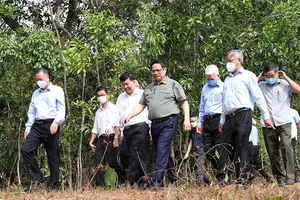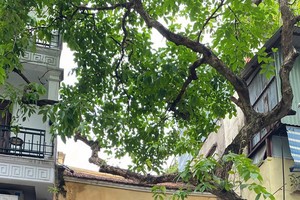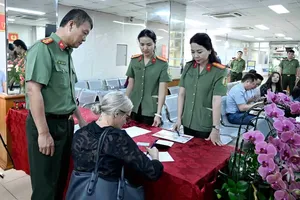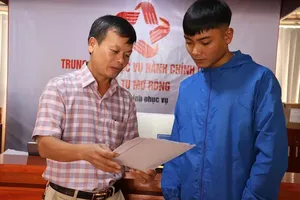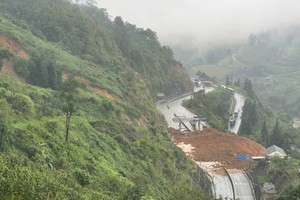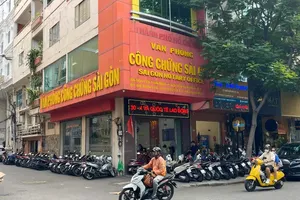Ater defeating the French army in Dien Bien Phu battle, on May 20, 1954, hundreds of Viet Minh soldiers were ordered to withdraw to a gorge at Chua Mountain in Thanh Liem District, Ha Nam Province. Many of them were killed when they were caught in a large-scale raid by French troops in a rear-guard action.
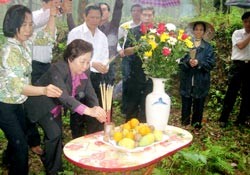
Villager elders from Thanh Tam Commune, Thanh Liem District, looked back at their lives in the 1960s as innocent boys, when they would lead buffalo to the foot of the mountain to let them eat grass while they cut grass, trapped birds or caught crickets.
“When we were children, we used to jump into tarns and swim to their hearts’ content in the hot summer afternoons” said a village elder.
“None of us knew the tarns were actually bomb craters, the traces of the fierce raid that took place on the fatal day”, he added
"Later in life, we were told by the old people in the village about the raid".
According to the villagers, during the war against the French, a number of dens in the mountain were used as secret places for the manufacture of weapons for Viet Minh troops. The vast ground on the foot of the mountain was a training place for local guerillas who conducted attacks against French military posts, such as Pho Ca, Bo and Tang.
In the night of May 20, hundreds from 884 Battalion, regiments 48 and 64 and 320 Brigade, who had just defeated the French at Dien Bien Phu, were ordered to withraw to the gorge at the mountain. The gorge was thought to be a secret and safe shelter for the soldiers, as it was dozens of meters deep and overgrown with thick forest.
No one knew how the Viet Minh’s secret garrison leaked out. The morning after Viet Minh soldiers' arrival, dozens of vans carried French soldiers to the site. They fired into the forest and down into the gorge like rain. The raid was backed by fighter planes’ bombings.
In the late afternoon, the French army was driven back, but Viet Minh troops suffered heavy causalities. After the combat, the local government and people immediately transferred the wounded soldiers to safe areas and buried those killed in the battle.
The rescue of hundreds of the soldiers who had hidden in the gorge was, however, impossible because they were buried under large rocks and thick layers of earth. The local people had no choice but to leave many to die together in one mass grave.
It is said that after the raid, the water from the gorge ran red and had a fishy smell. The phenomenon only stopped after a couple of months.
Several years later, many of the soldiers’ bodies began to be pushed up out of the ground or drift out from the gorge after heavy rains. At first, villagers would find whole bodies, but later only found occasional bones and skull fragments.
Local villagers collected all the bones and buried them at the martyrs’ cemetery in the commune. There are now over 200 graves of unknown martyrs at the cemetery, most are of soldiers killed in the raid at the gorge.
It is now 50 years later, many old villagers who survived the war and who well knew of the fierce raid have passed away. The tragic event will no doubt become just a legend if nothing is done to record the battle.
On the 50th commemoration of the Dien Bien Phu Victory, the villagers of Thanh Tam Commune have said authorities should establish a memorial to remember the martyrs and remind younger generations of the soldiers’ ultimate sacrifice for independence and freedom.
The monument will be a place for the villagers to offer incense and pay tribute to the souls of the martyrs. It will also inspire younger generations with patriotism, to remind them that people, no older than themselves, lost their youth to provide them with theirs.




